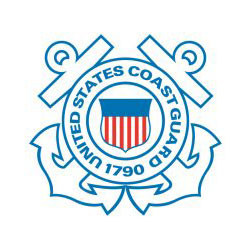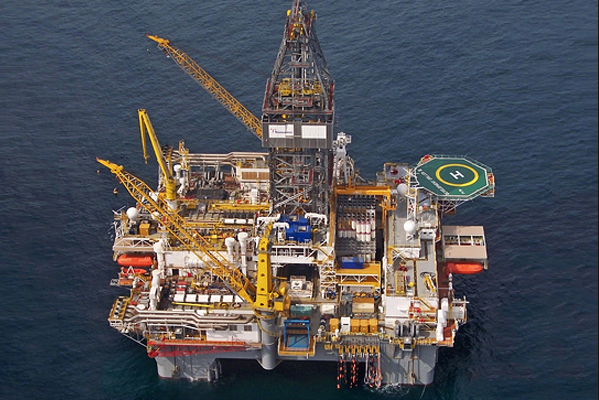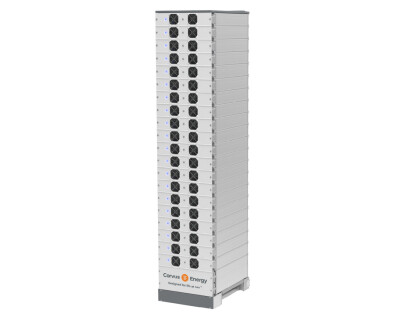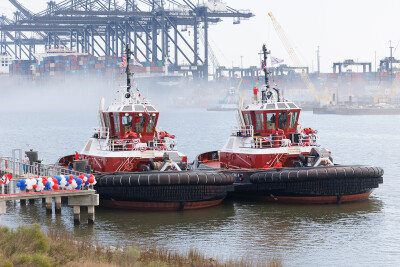Last week, the Coast Guard released a Marine Safety Alert, "Confined Spaces: Silent & Invisible Killers."
Safety Alert 04-19 serves as a reminder that despite decades of work by to improve confined space entry by maritime safety organizations, training institutions, and vessel owners/operators, the risks have not been eliminated.
This is illustrated by a recent casualty where three persons were asphyxiated while working onboard a laid-up mobile offshore drilling unit (MODU). Although the investigation is not yet complete, the following information is being conveyed with the continued hope that it will highlight this hazard with the aim to prevent recurrence. Ten crewmembers were onboard the MODU preparing it for a heavy lift transport to an overseas ship breaking facility. They were successful in dewatering three of the MODU's four legs. However, the de-ballasting system was inoperable in the fourth leg because piping and valves had been previously removed. To continue pumping, the crew rigged a portable diesel engine driven pump to discharge the tanks. Each leg had six decks. The first two uppermost decks had access hatches that allowed easy transfer of crew and equipment between the decks. The remaining decks were accessed via manhole hatches that were too small to allow passage of the portable pump and had to be enlarged. As each ballast tank was fully discharged, the manhole cover at the bottom of the tank was enlarged and the pump was lowered. Once they reached the lowermost ballast tank, the pump was set up with its suction hose in the tank and discharge hose exiting the leg via a hole torched through its side shell plating. A second smaller hole was also cut to serve as an air supply vent. Seven of the crew onboard were involved in the dewatering operation and this casualty. They were experienced mariners, but lacked MODU experience.
The superintendent, captain, rigging master, titter, and an AB (AB2) were on a dinner break while another AB (AB1) and the electrician were assigned to oversee the dewatering operation. Without notifying anyone, AB1 descended into the leg presumably to check the pump. The electrician became concerned when he failed to see AB1 on deck and descended into the leg himself, only to find AB1 collapsed and unconscious near the pump. Although nearly overcome by the exhaust fumes himself, he was able to safely escape. Once on deck, the electrician notified AB2 and the fitter about AB1’s collapse. AB2 then descended to assist AB1 while the fitter went to notify the captain. The captain, ship superintendent and fitter then notably, and without safety equipment, descended into the leg to assist AB1. Upon entering the upper part of the MODU’s leg, they noticed AB2 had collapsed and was now unconscious one level above AB1. At that time, the fitter was overcome by the vapors and collapsed next to AB2.
The captain and ship superintendent then managed to escape the leg with assistance from the rigging master who had entered the leg with a self-contained breathing apparatus (SCBA) brought onboard from another vessel. In the end, AB1, AB2 and the fitter died, while the captain and ship superintendent were airlifted to a hospital and survived. The quality and recency of the confined space entry training the crew received is unknown.
Other than the rigging master, each of the crew who entered the leg spaces may have lost situational awareness. Studies have shown that humans often miss the obvious cues of a situation while under stress and because their focus is upon another effort or action that needs to be accomplished. Of major concern to investigators was the captain’s decision to enter the space with two other persons without personal protective gear and a SCBA. Several sources indicate that over 50% of the workers in enclosed/confined spaces die while attempting to rescue their coworkers.
It appears that the hazardous nature of this operation wasn’t fully appreciated. This included the dangers of the MODU’s ballast tanks and their limited access, the exhaust of the operating diesel pump and minimal, if any, external air circulation. At the time, as in other instances of successive fatalities during confined space rescues, those who perished and even those who attempted to access the tank without a SCBA did so without a full appreciation of the invisible and silent killer they were facing.
As a result of this and other related casualties the Coast Guard strongly encourages all who work or may be employed onboard vessels in any role, whether they be senior shipboard officers or crew, riding crew, shore side managers, owners/operators, and other personnel to:
- Obtain the requisite level of knowledge and training of confined space entry procedures including emergency and rescue procedures;
- Ensure crews undergo periodic confined space training and participate in routine and practical onboard emergency drills;
- Verify all required confined space entry and rescue safety equipment is onboard, maintained, tested and fully functional; and
- Continually appreciate the dangers involved in confined space entry and educate yourself by further study.
This Safety Alert is provided for informational purposes only and does not relieve any domestic or international safety, operational, or material requirement. Developed by the Investigators of the Marine Safety Unit Port Arthur and the Office of Investigations and Analysis. Questions may be sent to HQSPF-fldr-CGF-INV@uscg.mil.





[5] copy.png.small.400x400.png)